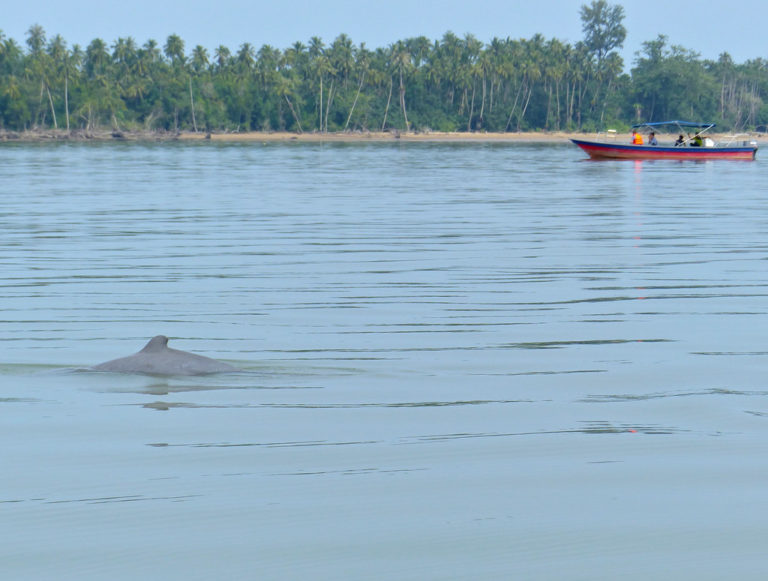Freshwater dolphins
Freshwater dolphins in the Mekong are benefitting from better protection
sustainability-times, By Darunee Sukanan on September 25, 2019
Irrawaddy dolphins are curious creatures… in more ways than one. They are curious by nature and look curious too. Instead of having long bottle-like nostrums like their relatives living in the seas, these freshwater mammals sport snub noses with bulging foreheads. They look a bit cartoonish but delightfully so.
Not surprisingly, the winsome appearance of these critically endangered dolphins draws many tourists to their watery habitat in Kratie province in Cambodia where the Mekong river runs through.
The freshwater dolphins, which are named after a river in Myanmar, can in fact be found in several rivers in Southeast Asia, including the Mekong, the longest river in the region that begins in the Tibetan plateau and makes it way through China, Myanmar, Thailand, Laos, Cambodia and Vietnam before emptying into the South China Sea. Yet even the luckiest of visitors to this stretch of the Mekong can only catch fleeting glimpses of the dolphins as the aquatic mammals spend most of their time underwater. They break the surface of the water only periodically and briefly before diving back down into the depths.
There is another reason why it is hard to catch sight of the dolphins: very few of them are left. Not that long ago they numbered in the thousands in the Mekong River. In past decades, however, their numbers have been dropping alarmingly. In 2015 there were only about 80 individual dolphins left in the Mekong. In an encouraging sign, last year as many as 92 of the aquatic mammals were counted by conservationists — the highest number in 20 years.
The increase in the number of dolphins has been driven by stepped-up conservation efforts that were set in place to combat illegal fishing activities in the river. In 2012 a protected no-fishing area was set up in the Mekong in order preserve the last few dozen dolphins. The conservation area lies at the core of their habitat that stretches from the eastern part of Cambodia’s Kratie province to the country’s border with Laos.
“It is no doubt because of the conservation efforts that we are seeing more dolphins,” says Eam Sam Un, a biodiversity and monitoring manager for the WWF. Increased attention from officials to the endangered aquatic mammals has also helped as the dolphins have become an iconic species in Cambodia.
“The dolphin is a flagship species, it’s well known in the area, highly visible and attracts national and international conservation interest and funding,” says Zeb Hogan, an aquatic biologist at the University of Nevada. “The protection of dolphins helps to protect the habitat of other wildlife in the area, including endangered turtles and large-bodied fish,” he adds.
However, a moderate rise in the number of dolphins does not mean their survival is assured. The animals continue to face various threats. Among the many threads are unsustainable fishing practices that continue to wreak havoc with riverine ecosystems. This year alone at least five Irrawaddy dolphin have been found dead. In July one dolphin died after getting entangled in fishing nets in Kratie province.
“The illegal use of fishing nets in conservation areas is the main cause of death for the Mekong dolphins,” says WWF-Cambodia. “We urge people not to carry out illegal fishing activities in conservation areas to protect this national living treasure for our country and future generations,” the NGO continues.
The animals are also at risk of being killed by the propellers of passing boats. That the mortality rate of the dolphins remains high means that conservation measures needed to remain vigorous so as to preserve the animals. “As threats to their survival persist, we need to redouble our efforts to protect the dolphins both for their future and that of the river and communities that live alongside it,” says Mark Drew, a WWF program director in Cambodia.

